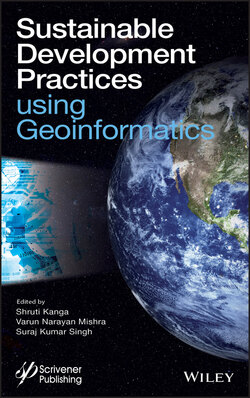Читать книгу Sustainable Development Practices Using Geoinformatics - Группа авторов - Страница 31
2.2 Study Area
ОглавлениеThe study area comprising 381 km2 in the Survey of India (SOI) topographical sheet no. 73 E/6, on a scale of 1:50,000, is situated in Ramgarh and Hazaribagh district of Jharkhand (Figure 2.1). It lies between longitude 85° 15’ to 85° 27’ and latitude 23° 35’ to 23° 44’ at an altitude of 348 m above mean sea level (MSL). The South Karanpura coalfield forms an elongated strip along the Chingara fault. It occupies different formations of the Lower Gondwana system such as Talchir, Karharbari, Barakar, Barren Measure, and Raniganj Formation that overlie with the Precambrian basement. The Coalfield considerably recognized for its excellent quality non-coking coal used by various industries such as power station, steel, cement, fertilizer, bricks-manufacturing, and many other medium and small-scale industries. The general climate of the area is tropical with maximum temperatures between 40°C and 2°C. The area receives an average rainfall between 1,102 mm and 1472 mm with significant seasonal variation. From November to the middle of February, there is the occasional cold weather, which follows rain. The Damodar River drains the area with the Nalkari River as its chief tributary. The main urban settlements in the area are Patratu, Bhurkunda, Barkakana, Saunda, Gidi, Lapanga, Dari, and Simratanr. Patratu is the leading industrial town, and it is well known for coal mining activity and thermal power. Various other medium and small-scale industries also present here are responsible for the degradation of air quality and land degradation in the area.
Figure 2.1 Location map of the study area showing village boundaries along with water bodies and coal mining areas.
